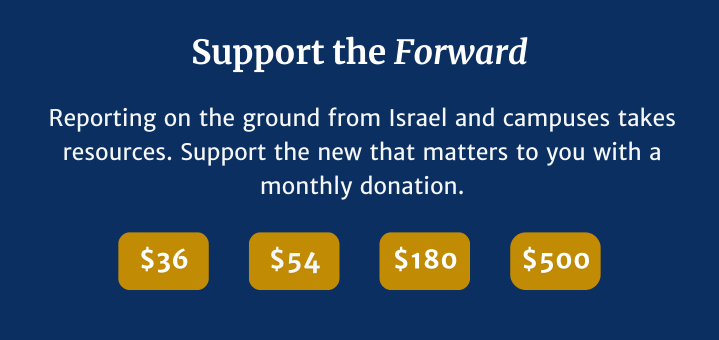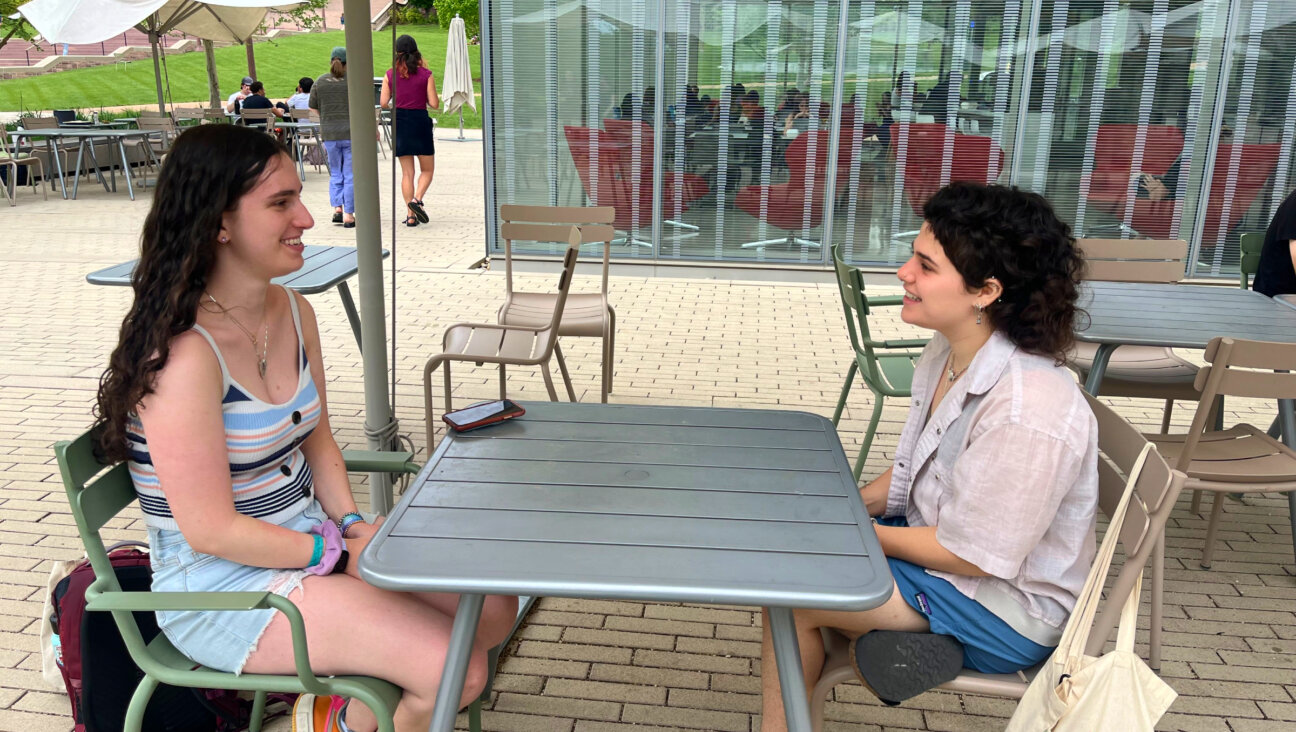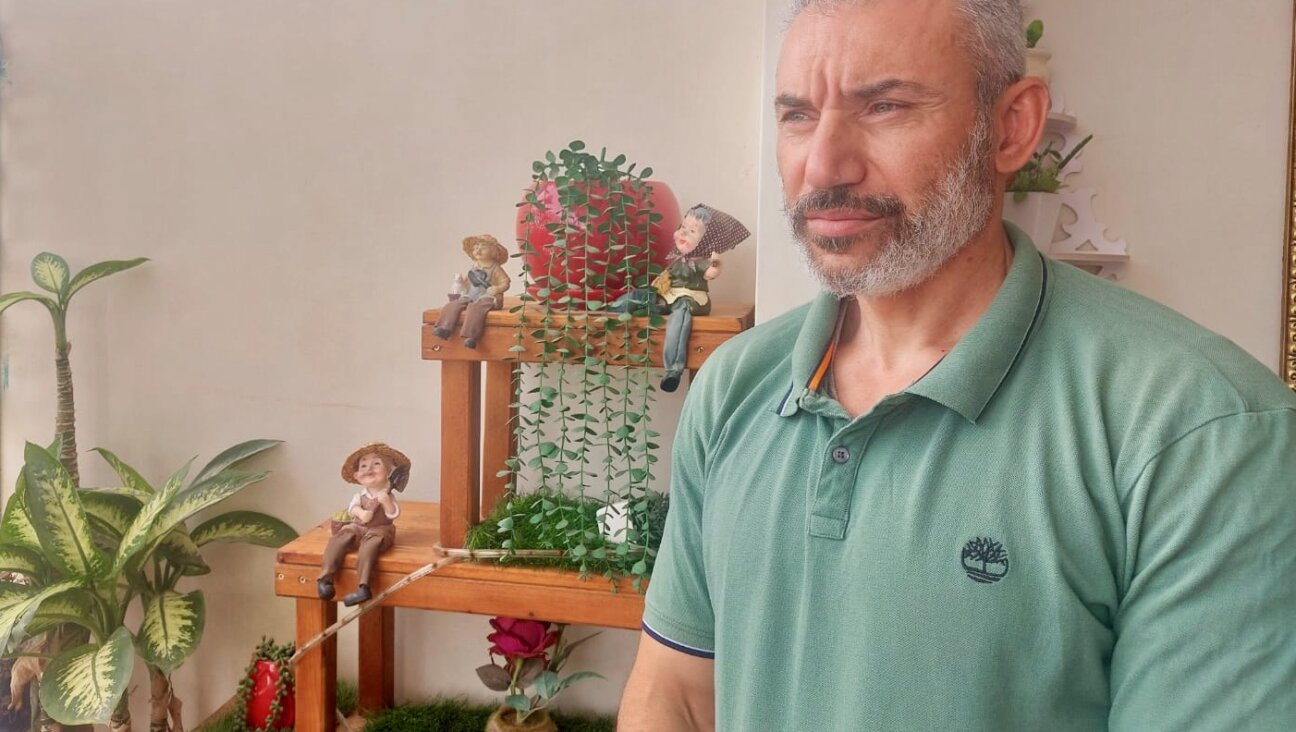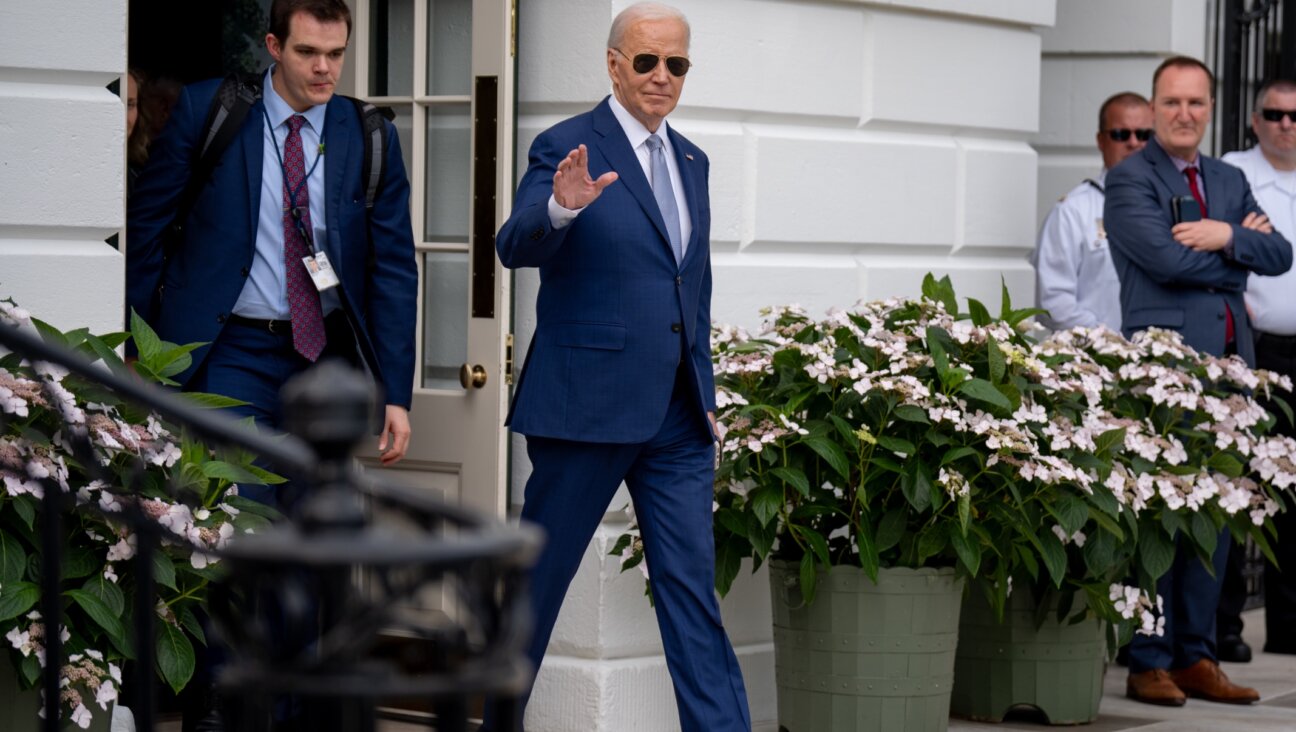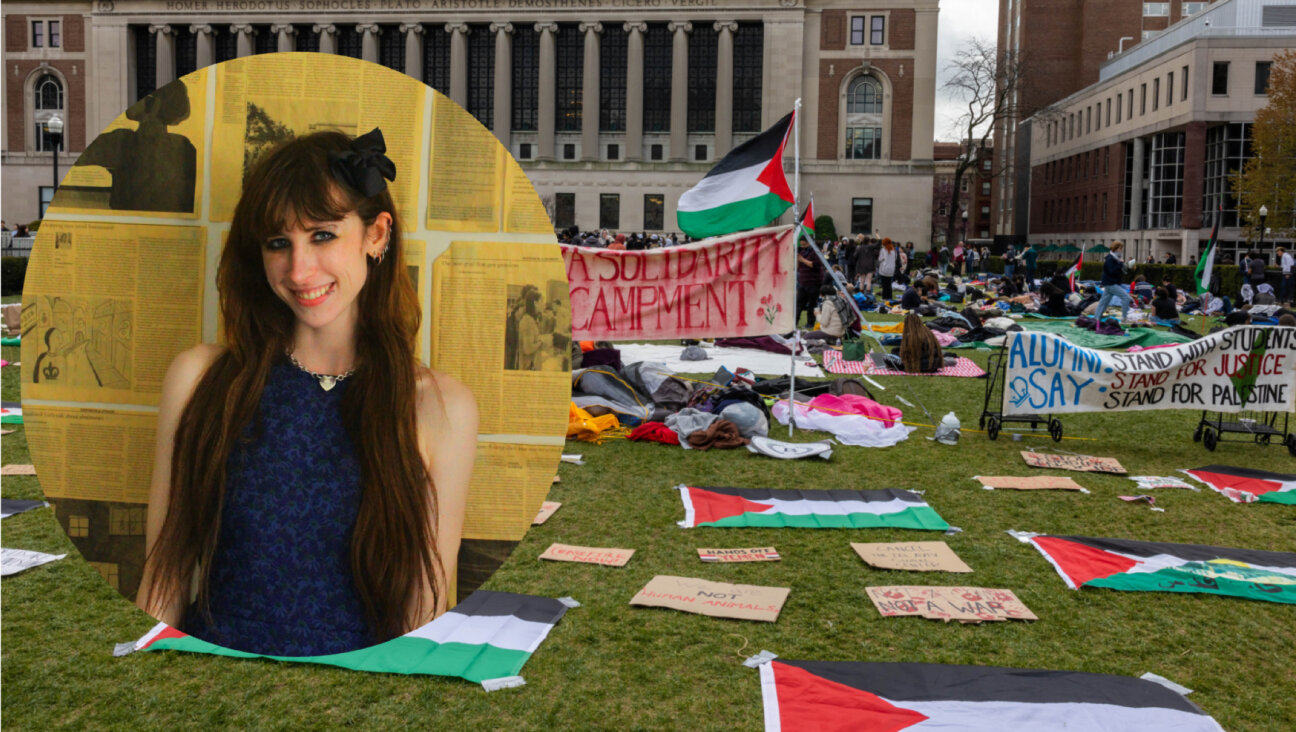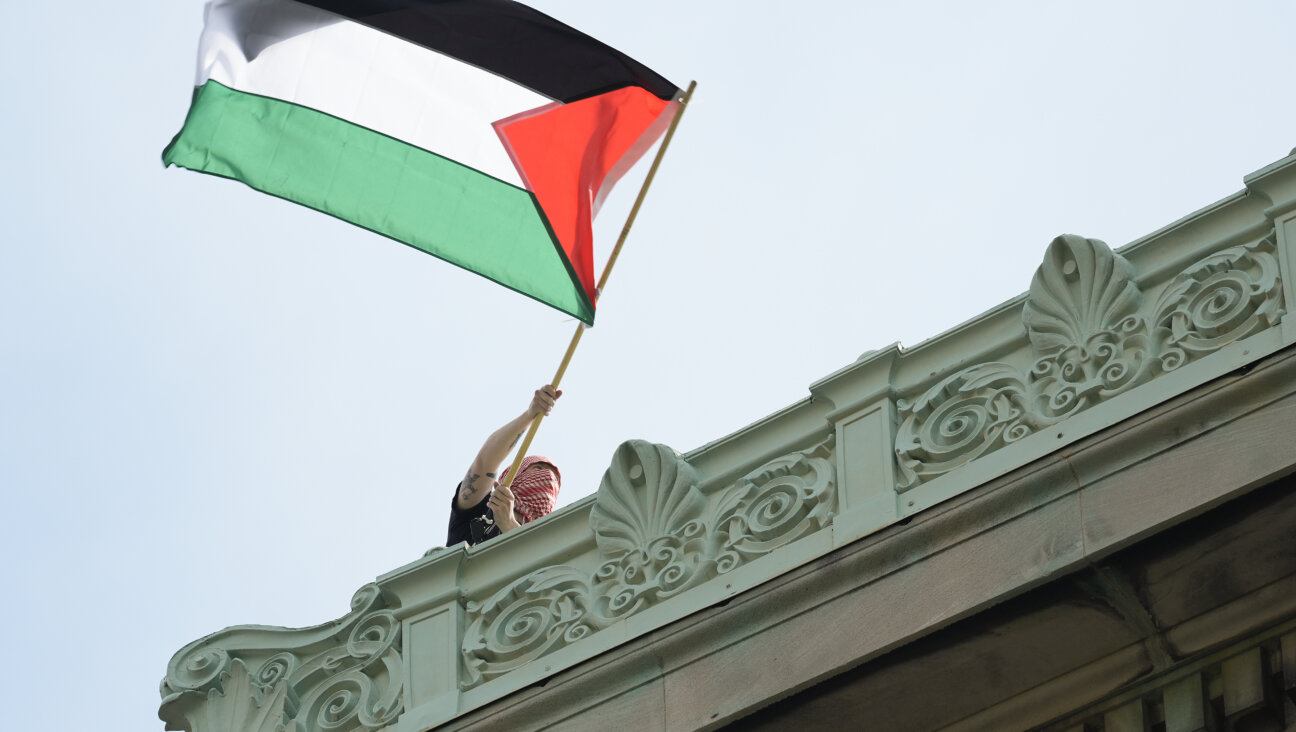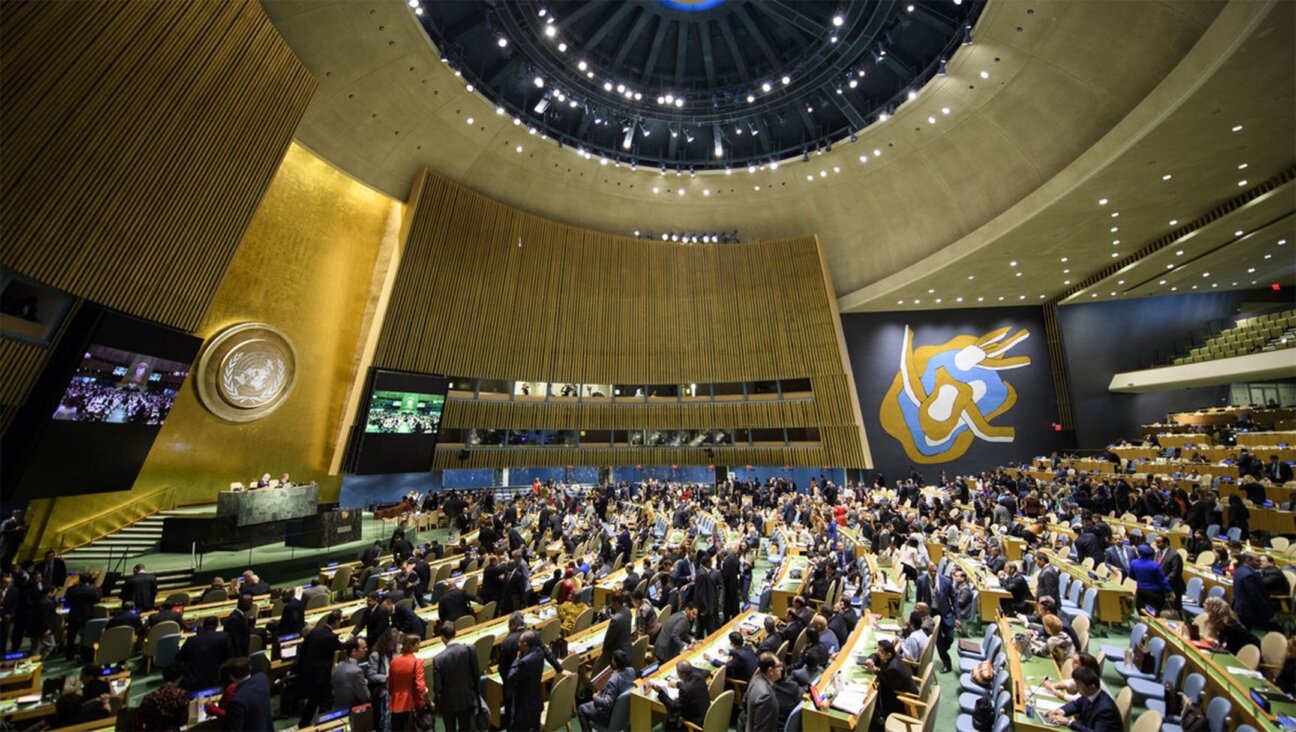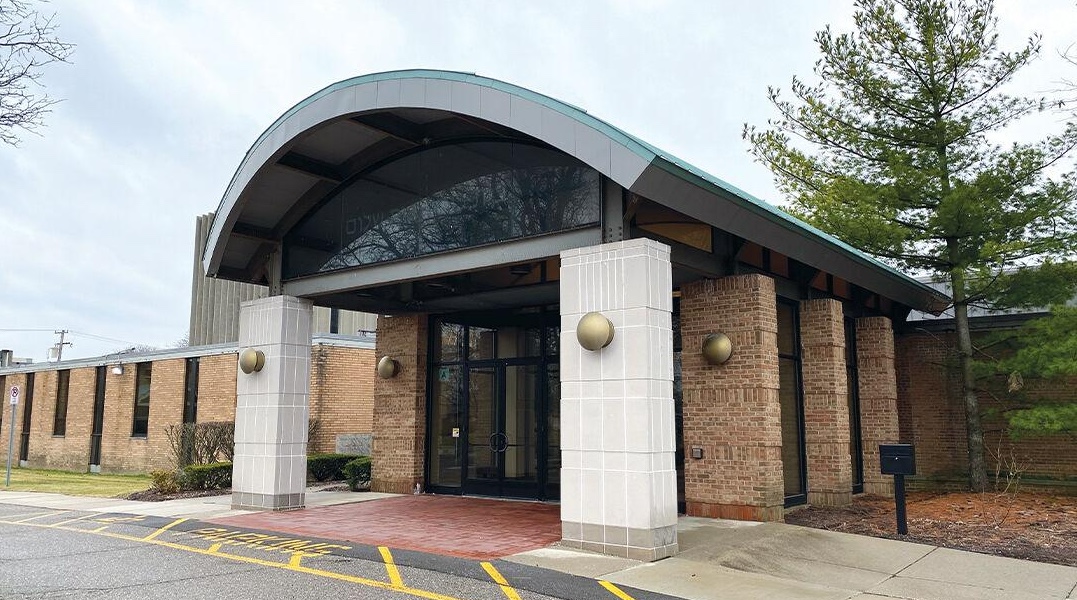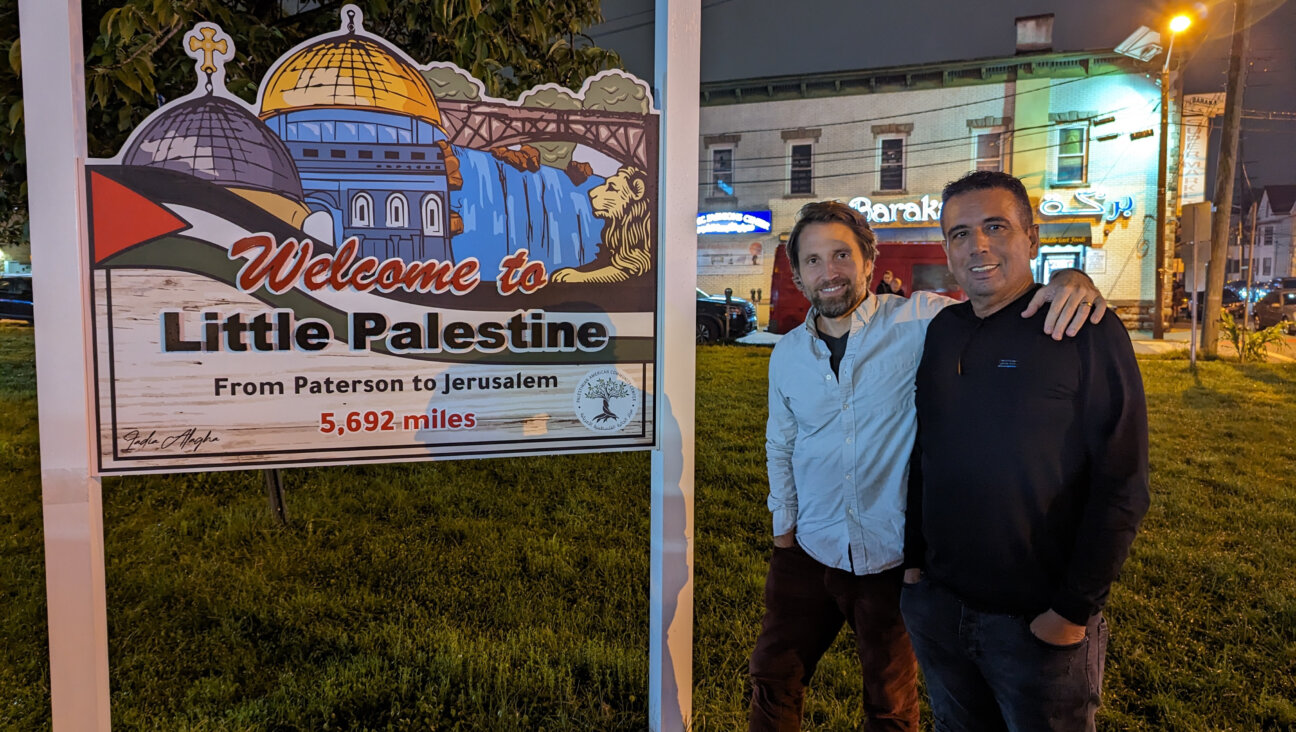Filmmaker Joseph Shamash Tries To Bridge Gap With Iran

Video Guy: Joseph Shamash?s online film features on-the-street interviews with Israelis about Iran. Image by Jeff Handel
Joseph Shamash believes that film creates space in real life for conversations to happen. That is his intention with his “One Wish for Iran, Love Israel,” video, which has gone viral since it was uploaded to YouTube in early August.
The video shows Israelis and Palestinians from different walks of life and religious backgrounds sharing a wish for the new Iranian president, Hassan Rowhani, on his inauguration, and for the Iranian people. Shamash made the video with two of his colleagues, spoken word artist Andrew Lustig and cinematographer Jeff Handel, as part of their One Wish Project, a documentary series to “bridge the gap between peoples in conflict.” The team also made a “One Wish Jerusalem” video, and soon they are planning to release a third video, focusing on the religious-secular divide in Israel.
Making “One Wish for Iran” was a very personal endeavor for 32-year-old Shamash, whose parents immigrated to the United States from Iran. He has worked in television in Los Angeles, and recently spent a year and a half at the Pardes Institute of Jewish Studies, in Jerusalem. This fall he is starting a master’s program in Jewish education at American Jewish University in Los Angeles. There he intends to develop conflict resolution curricular materials to accompany the “One Wish” videos. Shamash spoke with the Forward’s Renee Ghert-Zand.
Renee Ghert-Zand: How did you come up with the concept for the “One Wish” videos?
Joseph Shamash: I arrived in Israel in December 2011 and staffed a [Taglit-] Birthright trip. It bothered me that the participants told me they had been so afraid to come to Israel, because they thought they were entering a war zone. But when they step off the bus, they’re like, “Wow this is totally different from what I expected — and I had been so afraid, I wasn’t even going to come.” I was struggling with how to deal with this.
Then, when I saw a “Fifty People One Question, Tehran” video [an online video series asking everyday Iranians, “What do you wish to happen by the end of the day?”], I immediately thought, we have to do this in Israel. I thought it was a great way to try to show that question that I struggled with when I first got to Israel: How do you show people’s actual beliefs, the realities on the ground, in a five-minute video?
Did you just go up to random people on the street for the interviews?
My crew did a tremendous job in approaching people in a nonaggressive, nonprovocative way. We had a little makeshift sign that said, “Time for a question?” and went around with it. We just had conversations with people first to get them comfortable and to encourage them to go in front of the camera. We tried not to ask the question until they were in front of the camera. If they were feeling very hesitant, we told them the question beforehand.
We had a photo of Hassan Rowhani, and we asked them if they knew who it was. The majority thought it was Hassan Nasrallah of Hezbollah, but a lot of them knew that he was the new president of Iran but didn’t know his name. From there we asked for a wish for him. Sometimes they kept it very short; sometimes they said very interesting things. Some of the things we showed were the best of the conversations that ensued.
Some people didn’t get on camera, but we still had amazing conversations with them. It was an unbelievable way to get to know Israel, the people of the country, and to understand how they live their daily lives.
Were you surprised by how few hard-line, anti-Iran responses you got?
No one said, “Let’s go bomb Iran.” I was looking for that. I was hoping it would be there, because I didn’t want this to be just a fluffy, everyone-loves-peace-and-happiness thing, because that is not the full reality. There are definitely people with hard-line attitudes who exist. But that wasn’t the reaction of the people we asked.
What I was surprised about was that Palestinians feel the threat just as much as Jewish Israelis do. What they were saying is, “If you want to support the Palestinian cause, don’t get a nuclear bomb and bomb Israel, because you’re going to annihilate us at the same time.” It hadn’t registered with me that the Palestinians are very concerned about this, too.
I heard that you were planning to post the video on Hassan Rowhani’s Facebook page. Have you received any response?
We haven’t posted it on his Facebook page yet; we are waiting to finalize the Farsi subtitles. If Iranians can see it, I want them to understand it. It would be really cool if Rowhani saw it.
There are a lot of Persian Israelis in the video. Did you purposely seek them out?
We definitely actively sought out Persian Israelis. I wanted to incorporate the Persian-Israeli narrative…. They have the most legitimate voice in expressing what Iranians are like and what life in Iran is or was.
The thing that came up over and over was this great desire among Persian Jews living in Israel to return to and visit Iran. They were saying how beautiful Iran is, that there are so many amazing and incredible places to see and visit. There’s this intense desire for them to go back to visit family graves, to see places where they grew up, to see old friends, their old school, the scenery. They miss the Persian culture.
I can understand that, because my grandfather, for whom I am named, died when I was 1, and my parents were already living in Texas. My father has not been able to go back to visit the gravesite.
Amazingly, during the filming of the video, I happened to meet an elderly man named Baruch who knew my grandfather. He and my grandfather had been friends and neighbors in Iran, and the man had memories of jumping from roof to roof with him.
You are Jewish, Persian and American. How do you integrate all the parts of your identity?
I am trying to tackle it head-on. For many years of my life, I pushed away one of my identities, whether it was the Jewish one or the Persian one…. Now I realize how rich my background is, and I want to be able to harmonize all elements of that. I have this amazing history and culture of three incredible countries, and all the while there’s an internal struggle and also an external struggle. I have to incorporate my own identity into some of the challenges that are facing us in the world. Part of this film was my three-nation identity trying to come out.
This interview has been edited for length and style.

I hope you appreciated this article. Before you go, I’d like to ask you to please support the Forward’s award-winning, nonprofit journalism during this critical time.
Now more than ever, American Jews need independent news they can trust, with reporting driven by truth, not ideology. We serve you, not any ideological agenda.
At a time when other newsrooms are closing or cutting back, the Forward has removed its paywall and invested additional resources to report on the ground from Israel and around the U.S. on the impact of the war, rising antisemitism and the protests on college campuses.
Readers like you make it all possible. Support our work by becoming a Forward Member and connect with our journalism and your community.
Make a gift of any size and become a Forward member today. You’ll support our mission to tell the American Jewish story fully and fairly.
— Rachel Fishman Feddersen, Publisher and CEO
Join our mission to tell the Jewish story fully and fairly.






